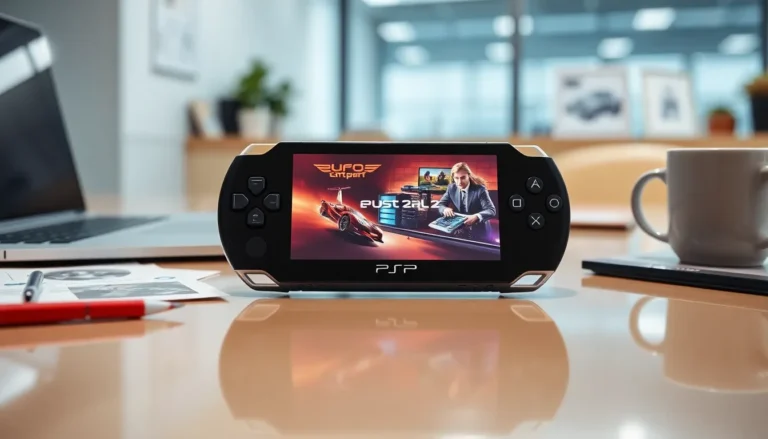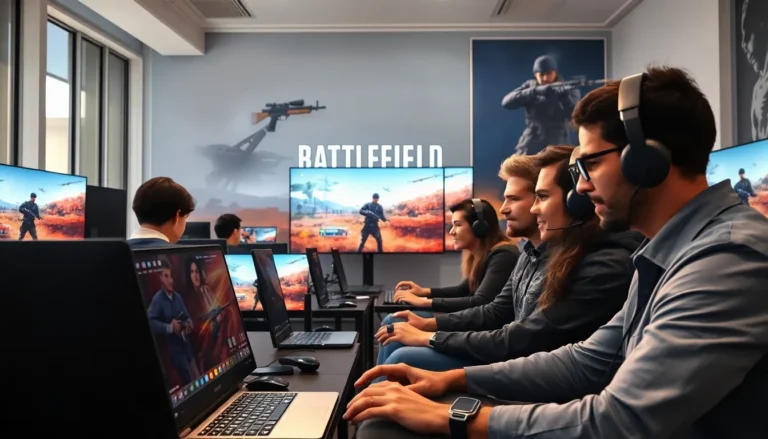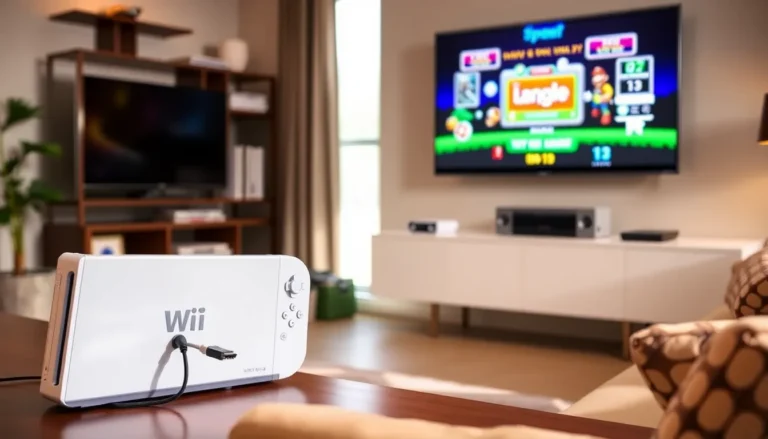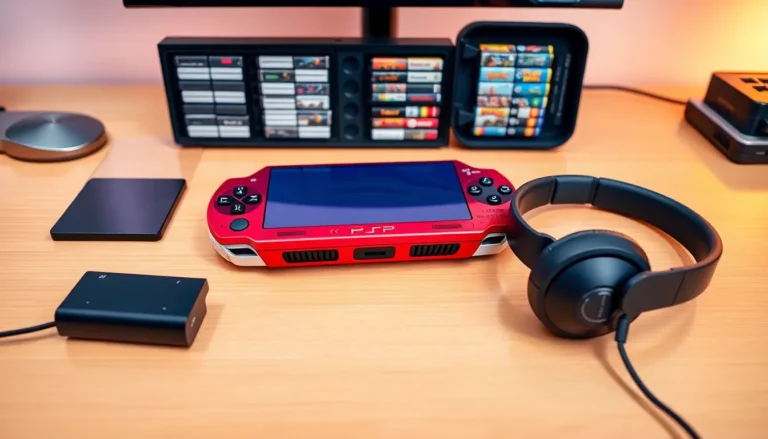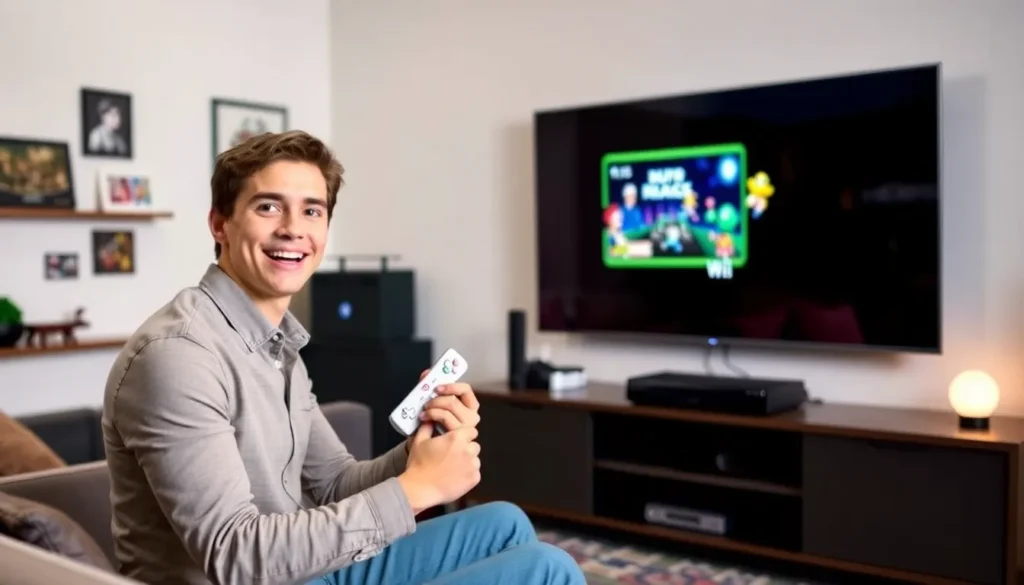Table of Contents
ToggleIn a world where high-definition visuals reign supreme, the Nintendo Wii might seem a bit out of place. But fear not. With the right HDMI adapter, this beloved console can bring its unique charm and gameplay to modern TVs without compromising quality. Imagine reliving your favorite Mario Kart races or engaging in epic battles on Super Smash Bros. with crisp, vibrant graphics, what’s not to love? Let’s jump into what you need to know about Nintendo Wii HDMI adapters and how they’re your ticket to a nostalgic gaming revival.
Understanding the Nintendo Wii and Its Outputs
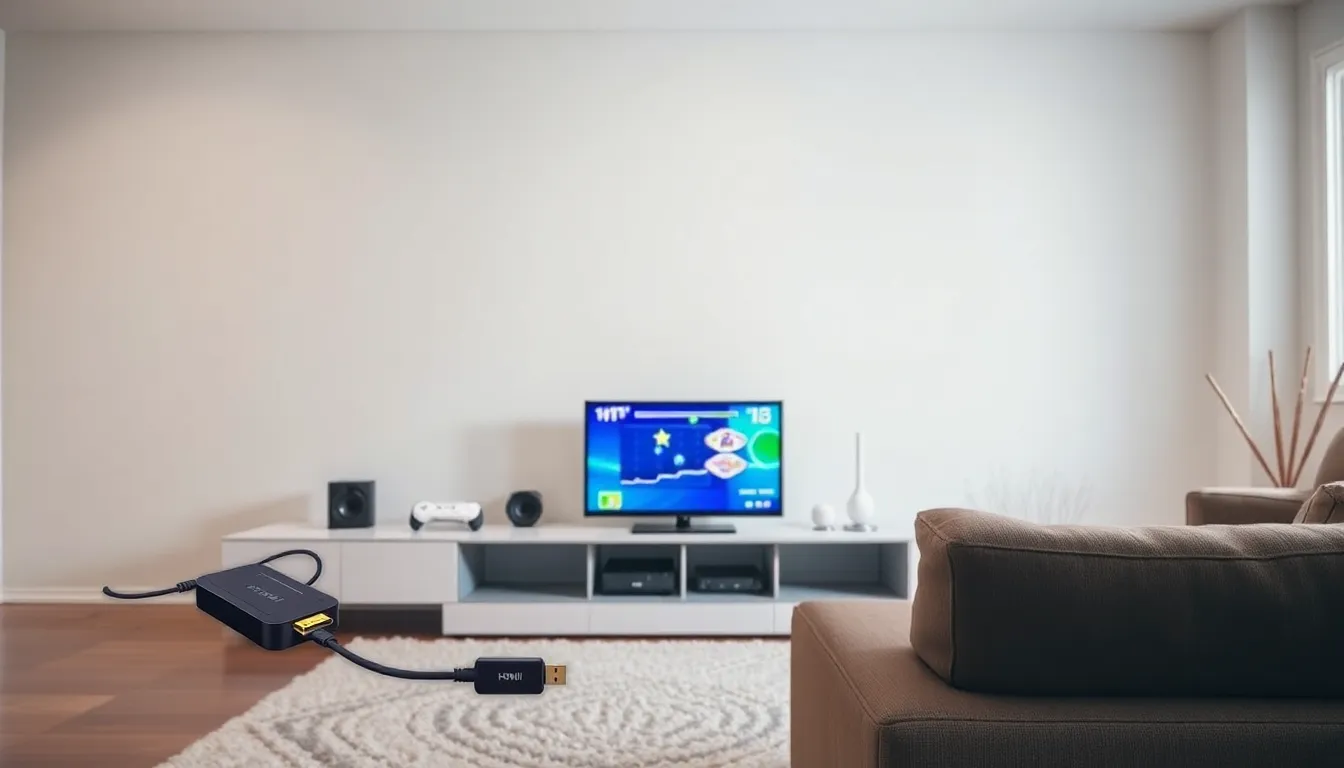
The Nintendo Wii, launched in 2006, broke the mold of traditional gaming with motion controls and an extensive library of engaging games. But, its output options can be somewhat limited by today’s standards. Originally, the Wii used composite cables for video output, which typically meant a lower-resolution experience on modern televisions. The standard red, white, and yellow plugs are nostalgic, but they can leave players yearning for a sharper visual experience when gaming on newer flat screens.
There are also component cables available for the Wii. These provide a better picture compared to composite cables, as they split the video into three separate signals, red, blue, and green. Still, even component cables may not deliver the vibrant clarity that gamers desire in the HD era. Enter HDMI adapters, a simple solution to bridge the gap between the classic gaming experience and modern network demands.
The Need for HDMI Connectivity
As technology has evolved, so have our expectations for video quality. Gamers expect not just good graphics but stunning visuals that enhance gameplay. The problem is that many TVs today prioritize HDMI connections while leaving older systems like the Wii in the dust. A lack of HDMI connectivity means that players are often stuck with lower resolution, less vibrant visuals that just don’t cut it in an HD world.
The difference in clarity is noticeable. When switching from those old composite cables to an HDMI connection, players can expect sharper images and improved color saturation. This upgrade can breathe new life into classic titles, allowing players to appreciate the art and design that went into their favorite games. In short, an HDMI adapter isn’t just a convenience: it’s a necessity for gamers who want to maintain their love for the Nintendo Wii while enjoying modern technology.
Choosing the Right HDMI Adapter
With various HDMI adapters available on the market, picking the right one may appear daunting. But, several key factors can simplify this decision.
First, compatibility is crucial. Ensure that the adapter specifically supports the Nintendo Wii. Some adapters are marketed for multiple consoles, but not all work perfectly with the Wii’s output. Look for reviews that specifically mention successful compatibility.
Next, consider video quality. Some adapters upscale the 480p original resolution of the Wii to 720p or even 1080p. Users should keep an eye out for such features if they crave higher resolutions.
Finally, check connectivity features. Some adapters come with additional ports for audio, while others might offer built-in highlighting functions. Reading product descriptions and reviews can lead gamers to the perfect selection that meets their specific needs.
Opting for a reliable brand also helps to assure the durability and performance of HDMI adapters, so do a little research before making a choice.
How to Connect Your Nintendo Wii Using an HDMI Adapter
Connecting your Nintendo Wii via an HDMI adapter is typically straightforward, even for those without technical expertise. Here’s a step-by-step guide to get you started:
- Unpack Your HDMI Adapter: Begin by taking out the HDMI adapter and familiarizing yourself with the ports. There will likely be a connector for the Wii and an HDMI port for your television.
- Disconnect Old Cables: Unplug the existing composite or component cables from the Wii to avoid confusion.
- Connect the Adapter to the Wii: Plug the adapter into the Wii’s AVMulti port. Make sure it’s securely connected.
- Connect HDMI Cable to Adapter: Take an HDMI cable and plug it into the adapter’s HDMI output.
- Connect to Your TV: Plug the other end of the HDMI cable into an available HDMI port on your television.
- Select Input Source on TV: Using your remote, change the input source to the corresponding HDMI port. Voila. Your Nintendo Wii should now be ready for high-definition fun.
This simple procedure opens up a world of vibrant gameplay and stunning visuals, all while maintaining the charm of classic titles.
Benefits of Using an HDMI Adapter with the Nintendo Wii
The advantages of using an HDMI adapter with the Nintendo Wii extend beyond just image quality: they enhance the overall gaming experience. Here are some key benefits:
- Improved Picture Quality: With an HDMI connection, players enjoy clearer images and vibrant colors, elevating the visual quality of even the oldest titles to compete with today’s gaming standards.
- Single Connection: HDMI cables can transmit both audio and video, cutting down on the clutter of multiple cords. This ease of setup adds convenience, especially for gamers with limited space.
- Widescreen Support: Many HDMI adapters allow players to use full widescreen formats, providing a more immersive experience when playing games originally designed for 4:3 formats.
- Future-Proofing: As televisions and technology continue to advance, using an HDMI adapter can help keep your gaming setup relevant, ensuring compatibility with new devices.
- Enhanced Sound Quality: An HDMI connection can sometimes offer enhanced audio quality, adding richness to the gaming experience.
Troubleshooting Common Issues with HDMI Adapters
While HDMI adapters are generally reliable, issues can sometimes arise. Here are a few common problems and their solutions:
- No Signal Detected: Ensure that all connections are secure. It may also help to change the input source on your TV.
- Poor Video Quality: If the image looks blurry, check if the HDMI adapter supports upscaling features and ensure it’s correctly set up.
- Audio Issues: If sound isn’t working, try adjusting the audio settings on the TV. Confirm that the volume isn’t muted and that the correct input is chosen.
- Incompatibility Problems: If the adapter does not seem to work, double-check that it’s compatible with the Nintendo Wii. Some adapters may need updates or specific settings adjustments for optimal performance.

